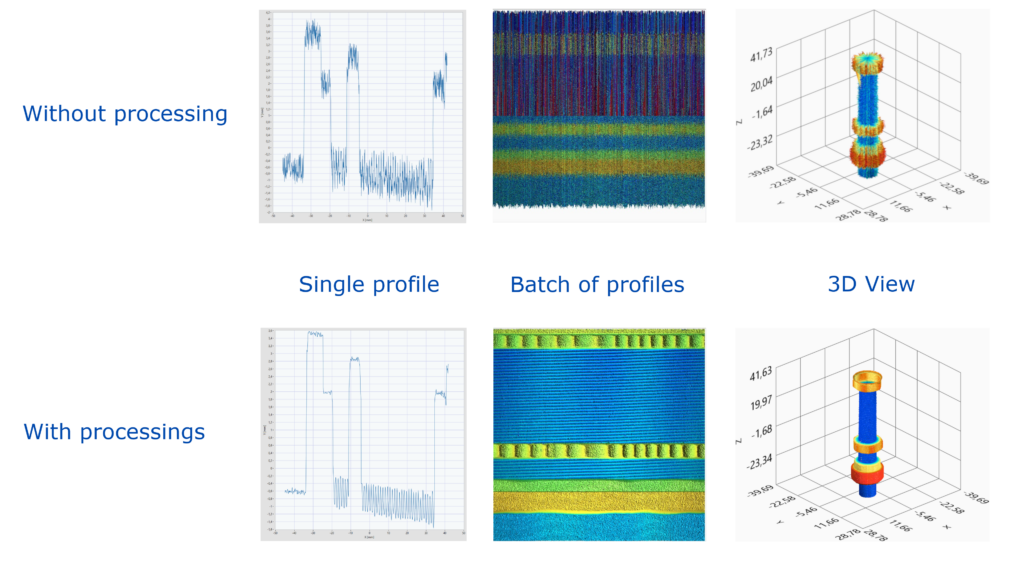
Processing
Why processing?
No matter if the data collected are noisy or very clean, they will need to be processed in order to highlight the key information that they contain. The data compilation and presentation is a difficult task that cannot be learned in books. It is possible to learn technics with specific purposes. However, which algorithms to use and how to sequence them is a knowledge that takes practice. This requires practical and industrial skills which are not given to everyone.
Luckily, we have been practicing for years on specific cases in many industries. We are now able to figure out what is the best approach according to the raw data quality and the goal to reach.
How to process?
Among the technics we master are the following:
Technical concerns
Even if one found the right data processing, the practical constraints might lead to a production slow down or event stop. various aspects need to be taken into account. In many industries, the response time is very important and needs to be held under a fixed time to ensure the production not to be delayed or stopped. This is especially the case in high volumes parts production factories. For some other applications, the resolution needed is so high that an out of memory issue might occur. Finally, the display of all the data generated is not possible or not convenient (to fast for human eye) and the solution need a tool to highlight only the important data.
Our mastery helps us to overcome this kind of practical limitations.
